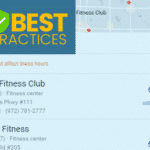Sometimes wellness business leaders drink too much of their own Kool-Aid. They’re so passionate about their vision that they no longer see the priorities of their clients, members and customers clearly.
It’s like that old song about an engaged couple: “you say to-MAY-to, I say to-MAH-to, let’s call the whole thing off.” (lyrics, video)
Wondering why so many beautiful customer relationships go wrong in your wellness business?
Consider these customer service scenarios:
Efficient…or disengaged?
You’re convinced that members of your circuit workout studio love the efficiency of the workout compared to a group fitness class. They’re in, out, in a flash – no waiting while the instructor modifies a move for someone with a knee problem, or gives form pointers to that slow-to-catch-on guy in the front row.
You’re so convinced…that you overlook the fact that 40% of your members turn over in a year. Why? Turns out, they LIKE group engagement. They LIKE expert guidance. Sure, they’re time-sensitive. But that’s not ALL they care about.
A small-group program – same circuit workout, but members do it as part of a small group vs by themselves, and it’s guided by a fitness professional – might do a great job of hanging onto that 40% who want more than just a fast solo workout.
High-tech…or soulless?
Your direct-pay women’s health clinic is glowingly proud of its paperless check-in system. Patients hate filling out forms…and at your clinic…they don’t have to! They enter their contact, insurance and medical history in a tablet or at a kiosk, completed an online questionnaire to describe their symptoms and current medical issue, and they’re done!
When they get to the exam room, the medical assistant or doc already knows everything they need to know. So high-tech! So respectful of the patient’s (and provider’s) time!
But…it turns out that patients value the opportunity to tell their healthcare provider what’s up. The simple process of verbal communication with another human has value for them. Providers say that the highest-priority issue often doesn’t appear until they actually talk with the patient.
What’s the better answer? A hybrid approach – streamlining check-in, yet building in time for actual dialogue between the patient and provider.
Delightfully interactive…or irrelevant and intrusive?
Your corporate wellness programs are known for their emphasis on face-to-face fun and games, like challenges, competitions, and training teams. Your program designers firmly believe that a group activity is always more engaging and meaningful than a solitary activity. Let the other guys nag folks about putting exercise time on their calendars and tracking their activity in fitness and nutrition apps — people always stop using those anyway.
There’s just one catch…a sizable chunk of your customers’ employees hate group activities. They see these folks all day, and they don’t want to spend a minute more with them. They love getting outside, by themselves, to recharge.They look forward to solo time on the elliptical, watching House of Cards. They’re triathletes, their kids are in club soccer, they eat Paleo and have almost nothing in common with the folks in your group programs.
Who are you to say they’re wrong? Sure, if they have to they’ll participate in your programs – but don’t confuse reluctant involvement with true engagement.
Corporate wellness providers don’t have the luxury of targeting just one segment of their customer’s workforce. Your programming has to be responsive to the entire spectrum of temperaments and lifestyles, or you’ll be quickly replaced.
Affordable…or cheap?
Your health club chain offers the lowest prices in town. That’s no accident – your management team believes that price is really what matters to most people. (Also, pizza. Free on the last day of the month.)
They blame high member turnover on job loss and other household financial pressures, conveniently overlooking the fact that the economy’s doing great in their area and so are other health clubs.
What’s really up? Turns out your target customer does like low prices – but they also like a clean, well-lit facility where the toilet paper never runs out. Your reviews on Yelp include a steady drumbeat of complaints about dirty changing areas, poorly maintained restrooms, and harsh lighting.
Even the low-price leader needs to clearly understand table stables — the minimum acceptable experience — for their target customer.
A focus on essentials…or a one-track mind?
Your family wellness center offers healthy lifestyle programs. You firmly believe that knowledge is power – people have too much misinformation from Big Food. Your programs pack as much information as possible into the time available. In fact, your proudest moment is a Google review which said that “these folks could be teaching in a college.” You’re pretty sure that one star they gave you was just a misunderstanding about how the rating scale worked.
What’s the catch? You’re so sure you know what people need that you aren’t actually listening to them. If you were, you’d hear parents say that they know what healthy foods are, they just can’t find time to cook them at home. You’d hear them struggling with how to stay active when they travel frequently on business. You’d hear kids who aren’t couch potatoes – but don’t want to do yet another team sport. You’d hear someone else talking about the difficulty of eating right and exercising when they’re the caregiver for an elderly parent or a sick spouse or partner.
Turns out, information isn’t really the problem at all. Applying what you know in challenging circumstances is actually your customer’s priority.
The bottom line
Challenge your own preconceptions.
When you listen to customers, make sure you’re actually hearing them.
Dig into the data to understand problems like online complaints or high turnover — don’t rationalize them away.
Your customers, and your business, will thank you.



